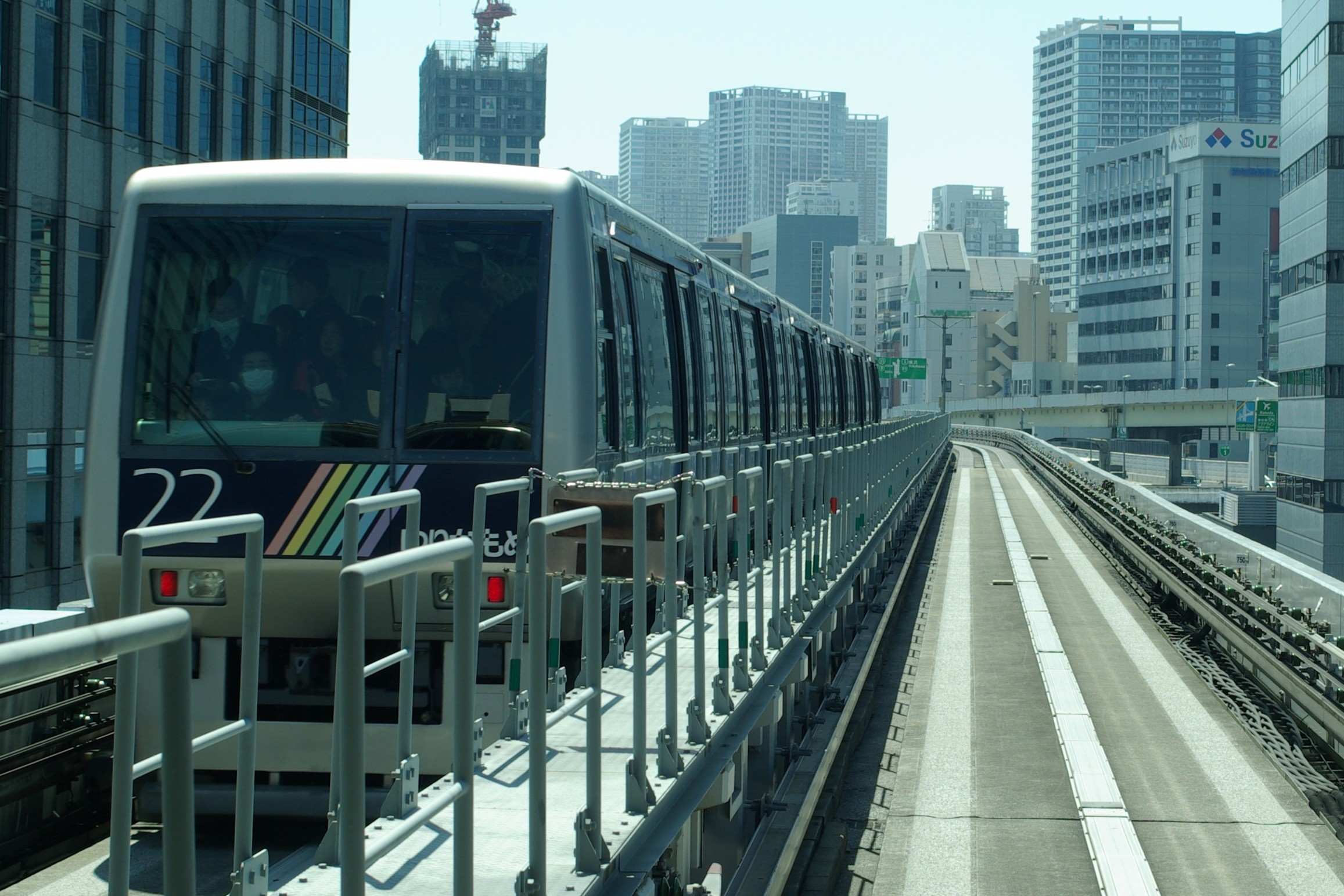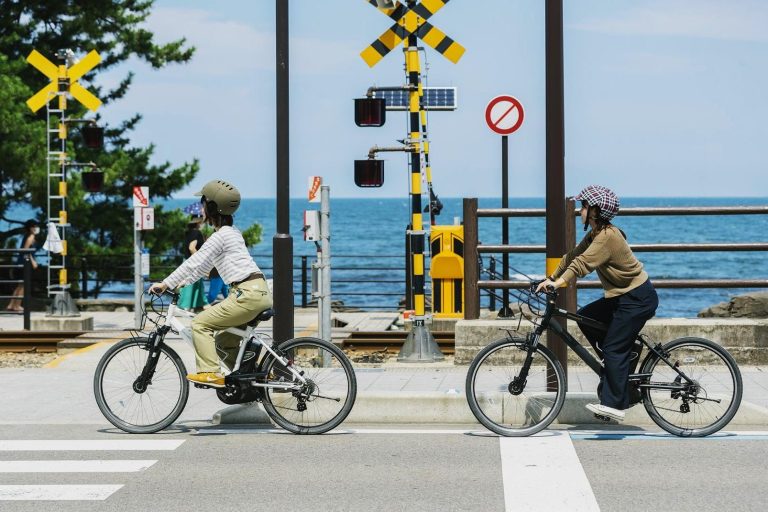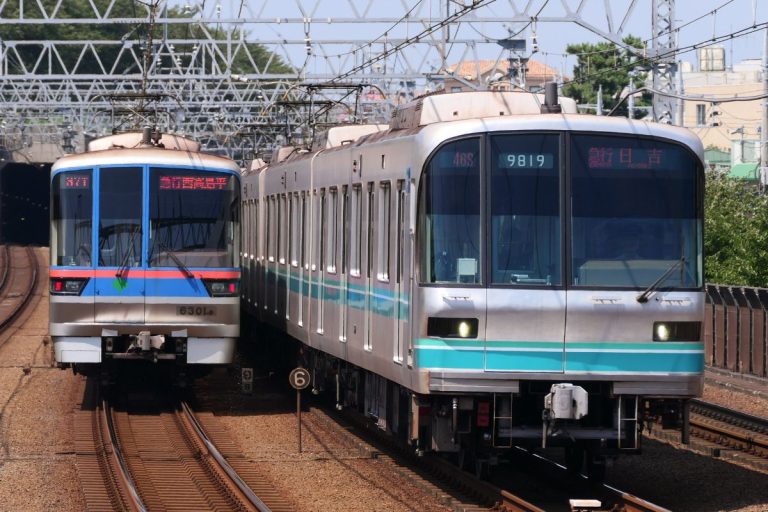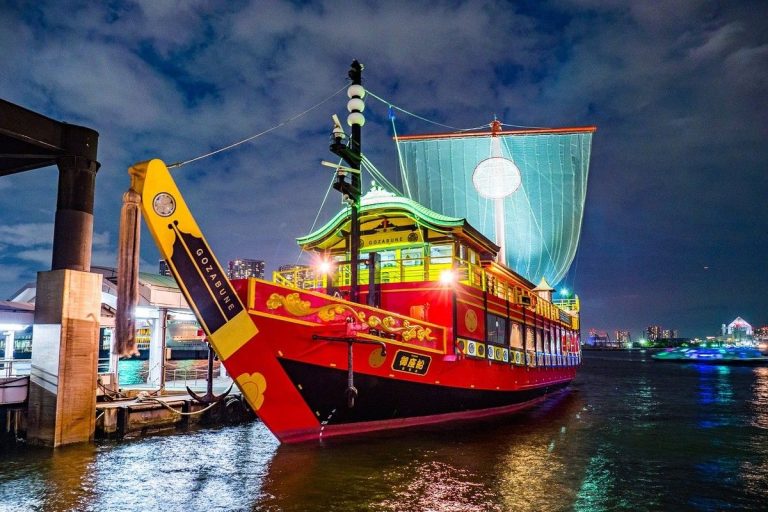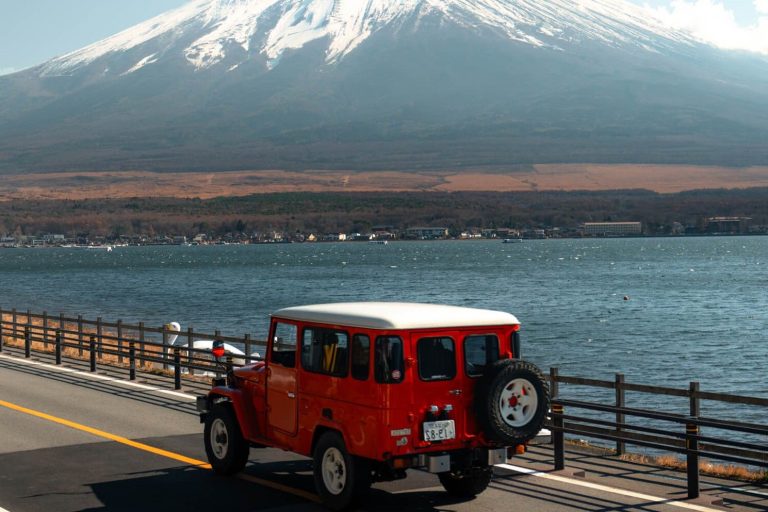Overview of Tokyo Monorail & Yurikamome Line
The Yurikamome line stands as Tokyo’s pioneering automated transit system, revolutionizing urban transportation since its inaugural run on November 1, 1995. This elevated guideway connects the bustling business district of Shimbashi to the modern waterfront areas of Odaiba and Toyosu, spanning 14.7 kilometers of scenic route above Tokyo Bay. Unlike traditional rail systems, the Yurikamome operates as a fully automated guideway transit line, utilizing rubber wheels guided along concrete tracks rather than steel rails.
What sets this transportation marvel apart is its driverless technology and breathtaking views. The line serves approximately 125,000 passengers daily as of fiscal year 2023, making it an essential component of Tokyo’s comprehensive public transportation network. The system complements other major transit options, working alongside the Tokyo subway guide systems and various rail networks to provide seamless connectivity across the metropolitan area.
Introduction to Yurikamome Line
The name Yurikamome derives from the black-headed gull, a bird commonly spotted around Tokyo Bay waters. This automated people mover represents a unique blend of cutting-edge technology and practical urban planning. The line operates using 600V 50Hz three-phase AC third rail electrification, allowing trains to reach speeds up to 60 kilometers per hour while maintaining whisper-quiet operation throughout the journey.
Key Statistics and Facts
The Yurikamome network encompasses 16 strategically positioned stations, all featuring double-track configuration for efficient bidirectional travel. Current rolling stock includes the modern 7300 and 7500 series trains, typically configured as six-car sets to accommodate varying passenger loads throughout the day. The system maintains remarkable punctuality, with trains departing every 4-5 minutes during peak hours and slightly longer intervals during off-peak periods.
Historical Background and Development
Construction of the Yurikamome began in the early 1990s as part of Tokyo’s ambitious waterfront development project. The initial phase connected Shimbashi to Ariake, with the line later extended to Toyosu in 2006 to serve the relocated Tsukiji fish market and surrounding commercial developments. This expansion transformed the line from a primarily tourist-oriented service into a vital commuter link for residents and workers in Tokyo’s rapidly developing bay area.
Route and Stations
The Yurikamome’s elevated track structure provides passengers with unparalleled views of Tokyo Bay, Rainbow Bridge, and the city skyline. The route strategically connects major business districts with entertainment complexes, exhibition centers, and residential areas, creating a comprehensive transportation corridor that serves diverse passenger needs throughout the day.
The line’s design incorporates gentle curves and moderate gradients, allowing for smooth acceleration and comfortable rides while navigating between high-rise buildings and waterfront installations. Each station features modern architecture with glass-enclosed platforms that protect passengers from weather while maintaining visibility of the surrounding urban landscape.
Total Length and Track Structure
Stretching 14.7 kilometers from end to end, the Yurikamome utilizes an innovative guideway system that differs significantly from conventional railways. The concrete track structure supports rubber-tired vehicles that follow a central guide rail, providing stability and precise navigation without the noise associated with steel wheel-on-rail systems. This design choice enables the line to navigate tight urban spaces while minimizing environmental impact on surrounding neighborhoods.
Major Stations on the Route
Key stations include Shimbashi, serving as the primary connection point to JR lines and the Tokyo Metro system. Takeshiba offers access to ferry terminals and waterfront dining, while Daiba and Aqua City Odaiba stations provide direct entry to major shopping and entertainment complexes. Tokyo Big Sight station serves the massive convention center, and Toyosu connects passengers to the famous fish market and surrounding commercial developments.
Connection to Other Transportation Systems
The Yurikamome integrates seamlessly with Tokyo’s broader transportation network. At Shimbashi, passengers can transfer to multiple JR East train passes and subway lines, while Toyosu provides connections to the Tokyo Metro Yurakucho Line. The system also coordinates with Tokyo airport shuttles and other transportation services, ensuring convenient access to both domestic and international travel options.
Ticketing and Fare Options
The Yurikamome offers flexible ticketing solutions designed to accommodate various travel patterns, from single journeys to extended sightseeing adventures. The fare structure reflects distance traveled, with prices starting at 190 yen for short trips and scaling upward for longer journeys across the entire network.
Passengers can choose from multiple payment methods, including traditional paper tickets, IC cards, and specialized passes tailored for tourists and frequent travelers. The system accepts all major IC card types used throughout Tokyo’s public transportation network, ensuring seamless integration with other transit services.
Types of Tickets Available
Regular single-journey tickets can be purchased at station vending machines, while IC cards offer the convenience of tap-and-go travel without the need for exact change. Commuter passes provide cost savings for regular users, particularly beneficial for residents commuting between waterfront areas and central Tokyo business districts. Special coupon tickets combine transportation with discounts at popular attractions along the route.
Pricing Structure
Fare calculation follows a zone-based system, with costs increasing incrementally based on distance traveled. Adult fares range from 190 yen for adjacent stations to approximately 380 yen for the complete end-to-end journey. Children receive standard 50% discounts on all fare types, while seniors and passengers with disabilities qualify for additional reductions when presenting appropriate documentation.
Discounts and Special Passes
The popular one-day pass, priced at 820 yen, provides unlimited travel on the Yurikamome for 24 hours from first use. This option proves particularly economical for tourists planning to visit multiple attractions along the route. Group discounts apply for parties of 15 or more passengers, while seasonal promotions occasionally offer special pricing during major events or holidays.
Key Attractions Along the Line
The Yurikamome serves as a direct gateway to some of Tokyo’s most popular destinations, transforming a simple transit journey into a sightseeing adventure. The line connects passengers to world-class shopping complexes, cutting-edge museums, expansive exhibition centers, and unique entertainment venues that define modern Tokyo’s waterfront character.
Each major attraction offers distinct experiences, from international trade shows and technological exhibitions to family-friendly amusement parks and sophisticated dining venues. The convenient station locations allow visitors to easily hop between destinations without the complexity of navigating multiple transportation systems.
Tokyo Big Sight
This massive convention and exhibition center ranks among Asia’s largest, hosting hundreds of trade shows, conventions, and public events annually. The distinctive inverted pyramid architecture makes it instantly recognizable from Yurikamome trains. Direct station access eliminates the need for lengthy walks or additional transportation, making it particularly convenient for business travelers carrying exhibition materials or samples.
Odaiba and Palette Town
Odaiba represents Tokyo’s vision of futuristic urban living, featuring artificial beaches, shopping malls, and entertainment complexes built on reclaimed land. Palette Town houses the giant Ferris wheel, Toyota showcase, and various themed attractions. The area transforms dramatically between day and night, offering completely different experiences as illuminated buildings reflect across Tokyo Bay waters.
Diver City and Tokyo Joypolis
Diver City Tokyo Plaza combines international shopping with dining and entertainment, anchored by the impressive life-sized Gundam statue that attracts visitors from around the world. Tokyo Joypolis, Sega’s indoor theme park, offers high-tech gaming experiences and virtual reality attractions. These venues cater to diverse age groups, making the area popular with families, couples, and technology enthusiasts alike.
Operational Features
The Yurikamome’s operational excellence stems from advanced automation technology that ensures consistent, reliable service while maintaining the highest safety standards. The system operates without traditional train operators, relying instead on sophisticated computer systems that monitor every aspect of train movement, station operations, and passenger safety.
This technological approach enables precise scheduling, optimal energy efficiency, and rapid response to changing passenger demand throughout the day. The automated systems continuously adjust train frequency based on real-time ridership data, ensuring adequate capacity during peak periods while maintaining cost-effective operations during quieter hours.
Driverless Technology
Every Yurikamome train operates under complete computer control, with onboard systems communicating continuously with central traffic management computers. Advanced sensors monitor track conditions, weather, and potential obstacles, automatically adjusting speed and stopping patterns as needed. This technology eliminates human error while providing smoother acceleration and braking than manually operated trains.
Operating Schedule and Frequency
Trains typically operate from approximately 5:30 AM until midnight, with the exact schedule varying slightly by station and direction. During peak morning and evening hours, trains depart every 4-5 minutes, while off-peak service maintains 6-8 minute intervals. The consistent scheduling makes trip planning straightforward, whether for business commuting or leisure sightseeing activities.
Safety and Maintenance Practices
Comprehensive safety systems include platform screen doors at all stations, preventing accidental falls or unauthorized track access. Regular maintenance occurs during overnight hours when passenger service ceases, allowing technical teams to inspect and service all mechanical systems without disrupting daily operations. Emergency communication systems enable direct contact between passengers and control centers if assistance becomes necessary.
Passenger Experience
Riding the Yurikamome offers a uniquely comfortable and scenic transportation experience that many passengers describe as more akin to a gentle amusement park ride than traditional urban transit. The elevated track provides panoramic views impossible to obtain from street-level transportation, while the smooth, quiet operation creates a relaxing atmosphere for both commuters and tourists.
Station design emphasizes passenger convenience and accessibility, with clear signage in multiple languages, intuitive layouts, and comprehensive amenities. The system’s integration with Tokyo’s broader transportation network ensures that passengers can easily continue their journeys using other transit options when needed.
Station Facilities and Amenities
All stations feature elevators and escalators for barrier-free access, accommodating passengers with mobility challenges, luggage, or strollers. Restroom facilities, vending machines, and information displays are standard at major stations. Climate-controlled waiting areas provide comfort during extreme weather, while large windows offer views of the surrounding cityscape and Tokyo Bay.
Voice Announcements and Accessibility Features
Station and onboard announcements utilize the distinctive voices of renowned anime voice actors, adding a uniquely Japanese cultural element to the transit experience. Multilingual announcements in Japanese and English ensure that international visitors can navigate confidently. Visual displays complement audio announcements, showing next station information, transfer connections, and estimated arrival times.
Scenic Views and Journey Experience
The elevated track provides constantly changing vistas of Tokyo Bay, Rainbow Bridge, Tokyo Tower, and the evolving waterfront skyline. Passengers often remain aboard for complete round trips simply to enjoy the scenery, particularly during sunset hours when the city lights begin to illuminate. The gentle curves and moderate speeds allow ample time to appreciate architectural details and landscape features along the route.
Special Events and Themed Routes
The Yurikamome actively participates in Tokyo’s cultural calendar through special promotions, themed decorations, and coordinated events with attractions along the route. These initiatives transform routine transportation into memorable experiences while supporting local businesses and tourism development throughout the waterfront area.
Seasonal celebrations often feature specially decorated trains, limited-edition tickets, and coordinated promotions with shopping centers and restaurants. The line’s management works closely with event organizers to ensure adequate service during major conventions, festivals, and holiday periods when passenger volumes increase significantly.
Seasonal Promotions
Spring cherry blossom seasons feature special viewing promotions highlighting waterfront sakura locations accessible via Yurikamome stations. Summer fireworks festivals coordinate with extended operating hours and additional train frequency. Winter illumination events showcase the spectacular light displays visible from elevated train windows, creating magical evening journeys across the glittering bay area.
Walking Courses and Guided Tours
Official walking courses connect multiple Yurikamome stations through scenic pedestrian routes that highlight architectural landmarks, public art installations, and waterfront promenades. These self-guided tours include detailed maps, estimated walking times, and recommendations for dining and shopping stops. Some courses coordinate with Tokyo Bay ferry cruises for comprehensive waterfront exploration experiences.
Collaboration with Local Events
Major events at Tokyo Big Sight, Odaiba festivals, and seasonal celebrations receive coordinated transportation support through adjusted schedules and additional signage. The line partners with event organizers to offer combination tickets that include both transportation and admission fees. Special train decorations and themed announcements often commemorate significant cultural events and holidays.
Future Developments and Expansions
The Yurikamome continues evolving to meet changing urban transportation needs while maintaining its position as a technological leader in automated transit systems. Planned improvements focus on enhanced passenger comfort, expanded connectivity with other transportation networks, and integration of emerging technologies that will further improve operational efficiency.
Long-term development plans consider the growing importance of Tokyo’s waterfront areas in international business, tourism, and residential development. The line’s capacity and service patterns will adapt to accommodate projected population growth and changing travel patterns in the bay area.
Planned Extensions and Upgrades
Future extensions may connect the Yurikamome to additional areas of Tokyo Bay development, potentially including new residential complexes and commercial districts. Rolling stock upgrades will incorporate the latest energy-efficient technologies and passenger comfort features. Station improvements focus on expanded capacity, enhanced accessibility, and integration with smart city technologies.
Impact on Local Transportation Network
The Yurikamome’s success influences planning for other automated transit projects throughout Tokyo and Japan. Its integration with existing taxi services and other transportation modes demonstrates effective multimodal transportation planning. The line serves as a model for balancing technological innovation with practical passenger needs in dense urban environments.
Sustainability Initiatives
Environmental considerations drive ongoing improvements in energy efficiency, noise reduction, and sustainable construction practices. The automated systems already provide optimal energy usage through precise speed control and regenerative braking. Future developments will incorporate renewable energy sources and advanced materials that further reduce the environmental impact of urban transportation systems.
Frequently Asked Questions
What is the Yurikamome Line?
The Yurikamome Line is a fully automated transit system in Tokyo connecting Shimbashi to Odaiba, known for its scenic views and driverless technology.
How long is the Yurikamome Line?
The Yurikamome Line stretches 14.7 kilometers.
How often do trains run on the Yurikamome Line?
Trains typically operate every 4-5 minutes during peak hours and 6-8 minutes during off-peak hours.
What types of tickets are available for the Yurikamome Line?
The Yurikamome Line offers single-journey tickets, IC cards, commuter passes, and special coupon tickets.
What attractions can I visit using the Yurikamome Line?
The Yurikamome Line connects to major attractions like Tokyo Big Sight, Odaiba, Diver City, and Palette Town.
Exploring Tokyo’s Waterfront with the Yurikamome
The Yurikamome Line not only facilitates urban mobility but also enriches the travel experience with its stunning views and convenient access to Tokyo’s waterfront attractions. As it continues to evolve, it remains a vital part of the city’s transportation landscape, offering both residents and visitors an efficient way to explore the dynamic bay area.
